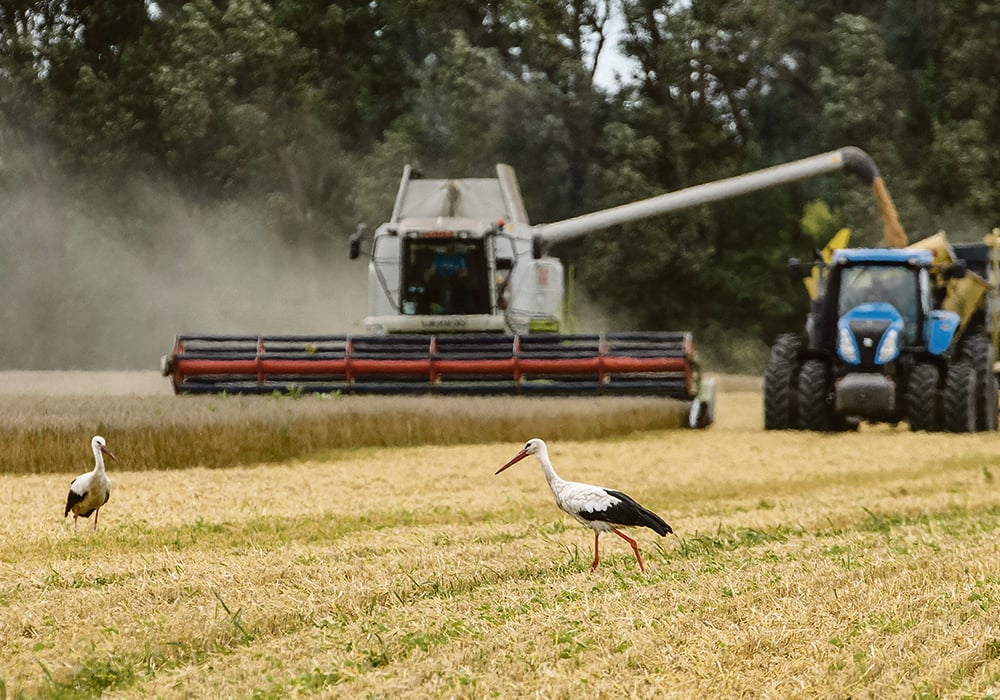Prices are expected to start climbing during the winter as buyers once again become nervous about available supplies
The pendulum has swung too far in grain markets, says an industry analyst.
“I think we have overdone it on the downside,” said Todd Hultman, lead analyst with DTN/Progressive Farmer.
December corn futures are stabilizing at around US$6 per bushel while nearby Minneapolis wheat futures have dipped below $9.
Hultman thinks there is a reasonable case to be made that corn should be in the $6.50 to $7 range, while Minneapolis wheat should be trading in the $10 to $11 range.
Those values would be well below the highs achieved earlier this year when a substantial “fear premium” triggered by the war in Ukraine attracted many speculators to the grain market.
Read Also

Chinese offer complicates canola marketing
Recently the Chinese ambassador indicated that there would be a potential deal between Canada and China regarding the current tariff war.
But around mid-May prices started to tumble as reports surfaced that Russia was willing to allow Ukraine to export some grain from its Black Sea ports.
“As soon as the wheat traders heard that, they started selling off wheat pretty consistently,” said Hultman.
The selling frenzy was also fueled by macroeconomic factors including rising interest rates, the U.S. dollar hitting a 19-year high and talk of a recession.
“(There) has been a mass exodus of the speculative side of the market,” he said.
The upshot is that futures prices on all three of the main U.S. wheat commodity exchanges fell by more than $5 per bu.
The speculator net long position in the Kansas City and Chicago wheat markets is at its lowest level in seven years, while the Minneapolis market is at the lowest point since the pandemic.
Hultman believes the market swung too far on the way up and has now over-corrected on the way down based on the movement of a few ships of “putrid corn” that has been rotting on vessels stranded in Ukrainian ports for months.
He believes Ukrainian farmers will still face extreme challenges getting their crops to market during a war. That assumes Russian President Vladimir Putin doesn’t have a sudden change of heart, which Hultman believes is quite possible.
The wheat market is going to be tight regardless of what happens in Ukraine. The U.S. Department of Agriculture is forecasting the lowest global wheat supplies in 14 years, although many analysts believe its Russia production estimate is far too low.
Hultman thinks Ukraine’s winter wheat plantings will be much lower than normal this fall because wheat and barley have become unprofitable crops to grow.
“The financial burden on the Ukrainian farmer is just exorbitant right now,” he said.
And there are other problems around the world, with Europe in the midst of a heatwave and DTN’s Digital Yield Tour showing that U.S. corn and soybean yields will be well below the USDA’s July forecast.
Tour results produced a forecast for national average corn yields of 167.2 bushels per acre and a soybean yield of 48.9 bu. per acre based on satellite imagery provided by Gro Intelligence.
That compares to the USDA’s July estimates of 177 bu. per acre for corn and 51.5 for soybeans.
“It does not look like we’re going to significantly add on to our ending surpluses of corn, soybeans or wheat this year,” said Hultman.
That is why he thinks grain prices will start to climb in the winter months when buyers once again get nervous about available supplies.
















